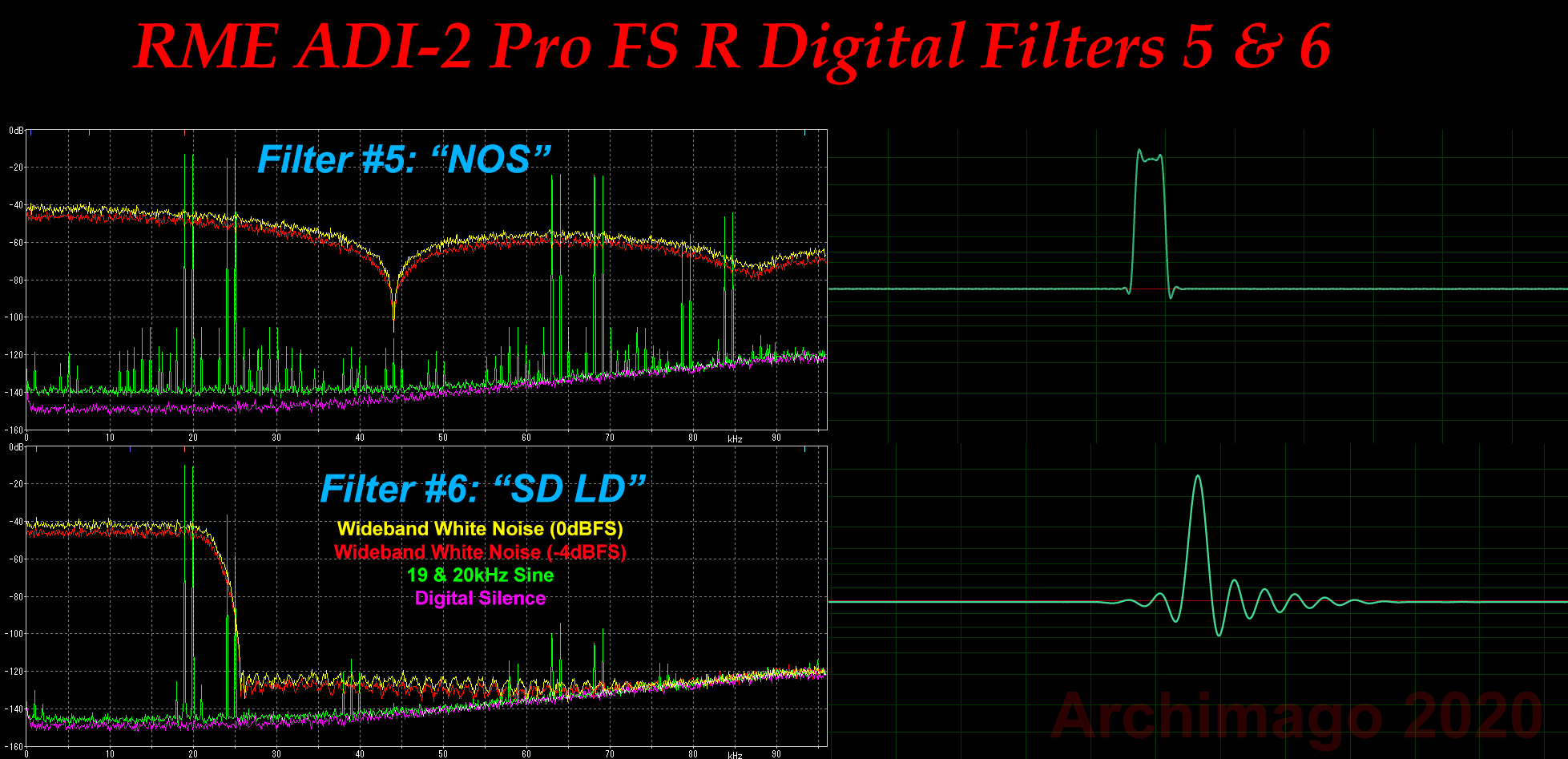AnalogSteph
Major Contributor
Oh wow, the ADI-2 Pro is not a happy camper in NOS mode. The spray of low-level IMD products even within the audible range suggests that the analog stages may be slightly unhappy with the abuse they're subjected to (I agree a multitone isn't likely to look too pretty), and look at that noise floor modulation - it's easily up by 6 dB in the 19/20 kHz IMD test! That has to be something in the DAC itself.Indeed, IMD is also increased:

NOS mode is essentially bypassing most of the digital filter so its lower group delay should come as no surprise. The SD LD (short delay low dispersion) filter appears to be a hybrid FIR + IIR filter, not a major surprise for a short group delay job. Its group delay spec is 10 samples with a deviation of +/-0.035 samples according to the AK4493 datasheet, I imagine the difference seen here would be a majority of that.
You're not listening with your eyes, are you? Your ears are more of a frequency domain device, and severely band-limited themselves.But doesn't that transient look much nicer on the NOS?
